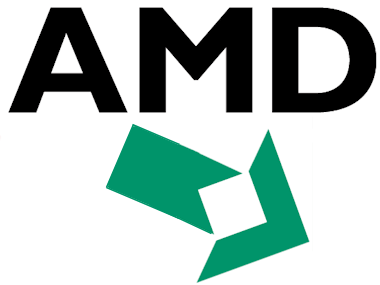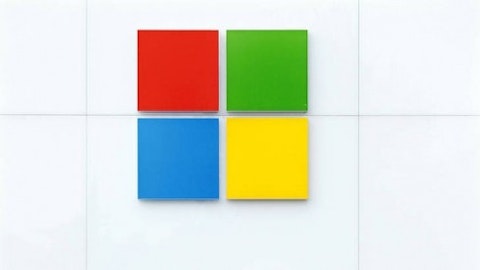Following a series of big quarterly losses driven by long-term weakness in the PC market, Advanced Micro Devices, Inc. (NYSE:AMD) CEO Rory Read decided to implement a new strategy. AMD’s turnaround plan involves not only cutting costs, but also reducing Advanced Micro Devices, Inc. (NYSE:AMD)’s reliance on the PC market by diversifying into adjacent markets.
Of particular interest to Advanced Micro Devices, Inc. (NYSE:AMD) are the “embedded” and “semi-custom” chip markets, because it expects those markets to continue growing (offsetting declines in the PC market), and a single design win can lead to a long revenue stream. Advanced Micro Devices, Inc. (NYSE:AMD) hopes to eventually derive 40% to 50% of its revenue from embedded and semi-custom chips. One of the biggest early targets for AMD in this respect was the game console market. Indeed, AMD won the designs for all three next-generation game consoles: Nintendo’s Wii U, Sony Corporation (ADR) (NYSE:SNE)‘s PlayStation 4, and Microsoft Corporation (NASDAQ:MSFT)‘s Xbox One.
Even Advanced Micro Devices, Inc. (NYSE:AMD) bears have praised the company for its success in the game console market. However, I am skeptical that this will prove to be a growth market as AMD anticipates. While the outgoing generation of game consoles sold more than 250 million units combined, a growing trend toward mobile and cloud-based gaming could mean that the game console market is ripe for disruption. In other words, AMD may have bet on the wrong horse.
Consumer unrest rising?
Nintendo was the first company to bring a new console to market for this generation, releasing its Wii U console last year. Sales fell flat, totaling just 3.45 million units in the first two quarters after launch. Slow console sales have led to weak developer support, which could make it even harder to boost sales going forward.
Still, Advanced Micro Devices, Inc. (NYSE:AMD) bulls and game console fans had high hopes for Sony Corporation (ADR) (NYSE:SNE)’s PlayStation 4, which was revealed back in February, and Microsoft’s new Xbox console, which was unveiled just last month. AMD stated on its Q1 earnings call in April that Nintendo, Microsoft Corporation (NASDAQ:MSFT), and Sony Corporation (ADR) (NYSE:SNE) were likely to ship more than 40 million game consoles combined in 2013, with that number expected to grow going forward.
However, rather than creating a wave of enthusiasm, Microsoft Corporation (NASDAQ:MSFT)’s Xbox One launch spawned protests among gaming enthusiasts who are worried about the use of digital rights management technology on Xbox One games. The games will need to be activated online, which would make it harder to trade games with friends and would give Microsoft Corporation (NASDAQ:MSFT) and game publishers control of the massive used games market. Gamers are also worried about the possibility that PlayStation 4 will include some type of DRM, as details on PS4 have been very spotty so far.
Disruption in the console market
Obviously, some gamers will buy next-generation consoles regardless of whether or not they incorporate DRM. Plenty of other people will buy the new consoles primarily for their non-gaming features, such as Xbox One’s interactive NFL content offering. However, selling more than 250 million units like the current generation of consoles will mean convincing a lot of people to shell out hundreds of dollars for a console, and then hundreds of dollars more for games. If Microsoft Corporation (NASDAQ:MSFT) and Sony Corporation (ADR) (NYSE:SNE) decide to go ahead with DRM, they could lose a lot of sales, which would directly impact AMD.
Moreover, consumers looking for a good gaming experience have more alternatives than ever before. First of all, the strong success of the Wii, PS3, and Xbox 360 means that plenty of households already have a gaming console. Many people may decide not to upgrade if they don’t like the current alternatives. Second, PC gaming continues to offer an alternative to console gaming. Third, the widespread adoption of tablets and smartphones provides casual gamers with a more convenient alternative to game consoles.
Another long-term threat comes from NVIDIA Corporation (NASDAQ:NVDA), which has developed a cloud-based GPU platform that will enable developers to offer “gaming as a service.” This business model could become very popular with consumers, as it would eliminate the upfront cost of consoles and games, and allow users to stream games to any Internet-connected device. It could also prove to be much more customer-friendly, as people could try a game out before committing to subscribe and getting full access.
Foolish wrap-up
While the game console market is in flux, it should be clear by now that Nintendo, Microsoft Corporation (NASDAQ:MSFT), and Sony Corporation (ADR) (NYSE:SNE) could have trouble convincing customers that they need to upgrade, given the ready availability of alternatives like mobile gaming and cloud-based gaming. If Microsoft and Sony Corporation (ADR) (NYSE:SNE) don’t placate fans quickly, the entire console market could stagnate or decline.
AMD is counting on game consoles becoming a long-term growth market, offsetting declines in the PC market. However, the game console market may be ripe for disruption, and the recent DRM controversy could be the catalyst for a shift toward newer gaming technologies. AMD has barely survived the disruption of the PC market. If the company has tied its fortunes to a declining industry yet again, it may not be so lucky in the future.
The article Did This Chipmaker Bet on the Wrong Horse? originally appeared on Fool.com is written by Adam Levine-Weinberg.
Fool contributor Adam Levine-Weinberg owns shares of NVIDIA. The Motley Fool recommends NVIDIA and owns shares of Microsoft.
Copyright © 1995 – 2013 The Motley Fool, LLC. All rights reserved. The Motley Fool has a disclosure policy.




